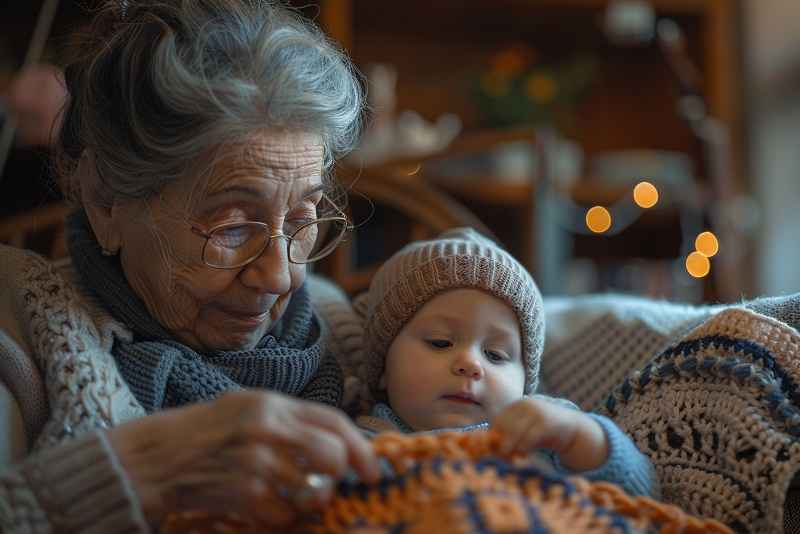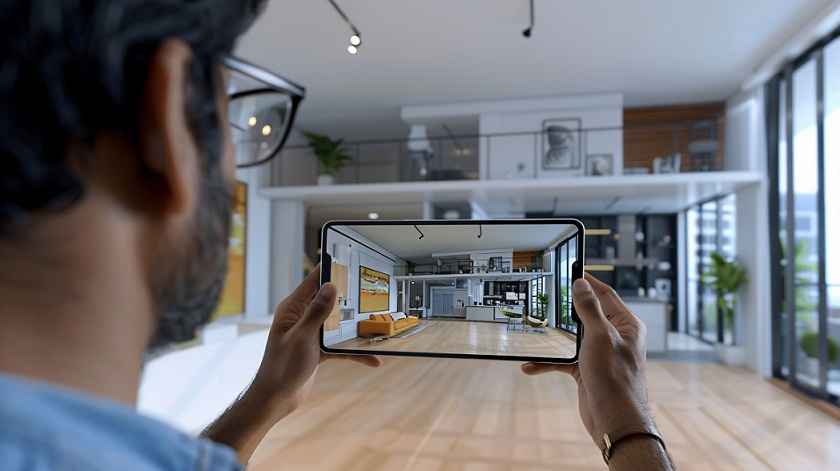Understanding Home Safety for Seniors
Definition of Senior Home Safety
Senior home safety refers to the measures and considerations taken to ensure the well-being and security of older adults within their living environment. This encompasses identifying and mitigating potential risks, implementing assistive technologies, and making necessary home modifications to support the unique needs and abilities of seniors.
Statistics on Accidents and Injuries Among Seniors at Home
According to the Centers for Disease Control and Prevention (CDC), falls are the leading cause of injury-related deaths and the most common cause of nonfatal injuries and hospital admissions for older adults. In fact, one in four seniors experiences a fall each year, often resulting in serious consequences such as hip fractures, traumatic brain injuries, and loss of independence.
Common Risks and Hazards for Older Adults in the Home Environment
The home environment can pose various risks for seniors, including:
- Slippery floors, loose rugs, and uneven surfaces that increase the likelihood of falls
- Poorly lit stairways, hallways, and entryways that make it difficult to navigate safely
- Outdated or inaccessible bathroom fixtures, such as high tubs and toilets
- Cluttered living spaces that obstruct movement and create tripping hazards
- Malfunctioning appliances or electrical systems that can lead to fires or other incidents
Why Senior Home Safety Matters
Maintaining Independence and Quality of Life
Ensuring a safe and accessible home environment is crucial for enabling older adults to maintain their independence and continue living in the comfort of their own homes. By addressing potential hazards and implementing appropriate safety measures, seniors can reduce the risk of accidents and injuries, allowing them to perform daily activities with confidence and preserve their quality of life.
Preventing Falls and Injuries
Falls are a significant concern for seniors, often leading to serious injuries, hospitalization, and long-term health consequences. Proactive home safety measures, such as installing grab bars, improving lighting, and removing tripping hazards, can effectively reduce the risk of falls and the associated physical, emotional, and financial burdens.
Reducing Healthcare Costs and Hospital Visits
When seniors experience accidents or injuries at home, the resulting healthcare costs can be substantial. By prioritizing senior home safety, families and healthcare systems can potentially avoid the need for costly emergency room visits, hospitalizations, and long-term care, ultimately reducing the financial burden on individuals and the healthcare system.
Peace of Mind for Seniors and Their Families
Maintaining a safe and secure home environment not only benefits the seniors themselves but also provides peace of mind for their families and caregivers. Knowing that their loved ones are living in a safe and well-equipped home can alleviate stress and allow families to focus on enjoying quality time together.
Key Areas of Concern for Senior Home Safety
Fall Prevention
Identifying Fall Risks in the Home Assessing the home for potential fall hazards, such as uneven floors, slippery surfaces, and poor lighting, is the first step in fall prevention. Recognizing these risks and addressing them proactively can significantly reduce the likelihood of falls.
Importance of Proper Lighting Adequate lighting is crucial for senior home safety, as it helps older adults navigate their living spaces with confidence and reduces the risk of trips and falls. Ensuring well-lit hallways, stairways, and entryways can make a significant difference in preventing accidents.
Installing Grab Bars and Handrails Strategically placing grab bars and handrails in high-risk areas, such as bathrooms and stairways, can provide seniors with additional support and stability, enhancing their ability to move around safely.
Non-Slip Surfaces and Removing Tripping Hazards Replacing slippery flooring with non-slip surfaces, securing area rugs, and removing clutter or obstructions can help create a safer environment by minimizing tripping hazards.
Bathroom Safety
Walk-In Tubs and Shower Chairs Replacing traditional bathtubs with walk-in tubs or installing shower chairs can make the bathroom more accessible and reduce the risk of falls during bathing.
Raised Toilet Seats and Safety Frames Raising the height of toilets or adding safety frames can make it easier for seniors to sit down and stand up, reducing the strain on their joints and muscles.
Non-Slip Mats and Proper Lighting Placing non-slip mats in the shower and tub, as well as ensuring adequate lighting in the bathroom, can further enhance safety and prevent accidents.
Kitchen Safety
Organizing for Easy Access Arranging kitchen items, such as frequently used utensils and appliances, at easily accessible heights can help seniors avoid straining or reaching for items that could lead to falls or other incidents.
Safe Appliance Usage Educating seniors on the proper and safe use of kitchen appliances, such as stoves and ovens, can prevent accidents and fires.
Fire Prevention Measures Installing smoke detectors, keeping fire extinguishers readily available, and avoiding clutter or flammable materials near heat sources can help mitigate the risk of kitchen fires.
Bedroom Safety
Proper Bed Height and Mattress Firmness Ensuring that the bed is at the appropriate height and the mattress provides adequate support can make it easier for seniors to get in and out of bed, reducing the risk of falls.
Nightlights and Easy-to-Reach Lamps Strategically placing nightlights and easy-to-reach lamps can help seniors navigate the bedroom safely during the night.
Clear Pathways to the Bathroom Maintaining clear and unobstructed pathways from the bed to the bathroom can prevent tripping hazards and make it easier for seniors to access the restroom.
Stairway and Hallway Safety
Proper Lighting and Visibility Ensuring adequate lighting and visibility in stairways and hallways is essential for seniors to navigate these areas safely, reducing the risk of falls.
Secure Handrails and Banisters Installing sturdy and continuous handrails on both sides of stairways can provide seniors with the necessary support and stability when ascending or descending stairs.
Contrast Marking for Steps Applying high-contrast markings or tape on the edges of steps can help seniors better distinguish changes in floor levels, improving their awareness and reducing the likelihood of missteps.
Technology and Senior Home Safety
Personal Emergency Response Systems
Personal emergency response systems (PERS) are devices that allow seniors to call for help in the event of an emergency, such as a fall or a medical crisis. These systems can provide a crucial lifeline and peace of mind for older adults and their families.
Smart Home Devices for Monitoring and Assistance
Advancements in smart home technology have introduced a range of devices that can enhance senior home safety, such as motion sensors, voice-controlled assistants, and automated lighting systems. These tools can help monitor the home environment, provide reminders, and enable seniors to maintain their independence.
Medication Management Systems
Medication management systems, including pill organizers and automated dispensers, can help seniors keep track of their medications, ensuring they take the right dosage at the right time. This can be particularly beneficial for individuals with cognitive impairments or polypharmacy concerns.
Home Modifications for Senior Safety
Widening Doorways for Mobility Aids
Widening doorways and hallways to accommodate the use of walkers, wheelchairs, or other mobility aids can make it easier for seniors to move around their homes safely.
Installing Ramps and Stairlifts
Providing accessible entry points and alternative means of navigating stairs, such as ramps or stairlifts, can significantly improve the mobility and independence of seniors.
Lowering Countertops and Cabinets
Adjusting the height of kitchen countertops and cabinets can make it easier for seniors to reach and interact with their living spaces, reducing the risk of falls or strains.
Creating a Safe Outdoor Environment
Well-Lit Walkways and Entrances
Ensuring that outdoor pathways, stairs, and entryways are well-lit can help seniors navigate the exterior of their homes safely, especially during the evening or in low-light conditions.
Maintaining Even Surfaces
Regularly inspecting and repairing any uneven or cracked surfaces, such as driveways, sidewalks, and patios, can prevent tripping hazards and make the outdoor environment more accessible for seniors.
Secure Railings and Supports
Installing sturdy railings, handrails, and other support structures along outdoor walkways and stairs can provide seniors with the necessary stability and confidence to move around their property safely.
The Role of Caregivers in Senior Home Safety
Conducting Regular Safety Assessments
Caregivers play a crucial role in regularly evaluating the home environment for potential hazards and implementing appropriate safety measures to address any identified risks.
Assisting with Daily Tasks and Routines
Caregivers can help seniors with daily activities, such as bathing, dressing, and meal preparation, ensuring that these tasks are performed safely and without unnecessary strain or risk.
Recognizing Signs of Declining Abilities
Observing and identifying any changes in a senior’s physical or cognitive abilities can help caregivers recognize the need for additional support or home modifications to maintain a safe living environment.
Professional Home Safety Assessments
Benefits of Expert Evaluations
Engaging the services of professional home safety assessors, such as occupational therapists or aging-in-place specialists, can provide a comprehensive evaluation of the home environment and offer tailored recommendations for improving safety and accessibility.
What to Expect During an Assessment
During a professional home safety assessment, the expert will typically conduct a thorough inspection of the home, identify potential hazards, and provide recommendations for modifications and assistive technologies that can enhance the senior’s safety and independence.
Implementing Recommendations
Once the assessment is complete, it is crucial to prioritize and implement the recommended safety measures to ensure the home environment is optimized for the senior’s well-being.
Financial Considerations for Senior Home Safety
Insurance Coverage for Home Modifications
Some insurance plans, including Medicare and Medicaid, may provide coverage for certain home modifications and assistive technologies that are deemed medically necessary for seniors.
Government Assistance Programs
Federal, state, and local governments often offer financial assistance programs, grants, or low-interest loans to help seniors and their families afford the necessary home safety improvements.
Budgeting for Safety Improvements
When planning for senior home safety, it is important to consider the costs of various modifications, such as installing grab bars, ramps, or stairlifts, and allocate appropriate funds to ensure the home environment is safe and accessible.
Encouraging Senior Participation in Safety Measures
Overcoming Resistance to Change
Some seniors may be resistant to implementing safety measures, as they may perceive them as a loss of independence or a reminder of their aging. Engaging seniors in the decision-making process and emphasizing the benefits of a safer home can help overcome this resistance.
You may also read (space heaters and generators safety tips)
Involving Seniors in Decision-Making
Actively involving seniors in the selection and implementation of safety measures can empower them, foster a sense of control, and increase the likelihood of their acceptance and adherence to the new safety protocols.
Emphasizing the Benefits of a Safer Home
Highlighting the increased independence, improved quality of life, and peace of mind that a safer home environment can provide can motivate seniors to embrace and participate in the implementation of necessary safety measures.
Maintaining a Safe Home Environment Over Time
Regular Safety Checks and Maintenance
Regularly reviewing and maintaining the home’s safety features, such as checking the functionality of assistive devices, replacing worn-out components, and addressing any changes in the home environment, is crucial to ensuring the continued effectiveness of senior home safety measures.
Adapting to Changing Needs and Abilities
As seniors’ needs and abilities evolve over time, it is essential to reevaluate the home environment and make necessary adjustments to accommodate these changes, ensuring the home remains safe and accessible.
Updating Safety Measures as Technology Advances
Staying informed about the latest advancements in senior home safety technologies, such as smart home devices and assistive technologies, can help families and caregivers continuously improve the safety and comfort of the living environment.
Community Resources for Senior Home Safety
Local Senior Centers and Support Groups
Connecting with local senior centers, community organizations, and support groups can provide seniors and their families with valuable information, resources, and assistance in implementing home safety measures.
Home Health Agencies and Occupational Therapists
Collaborating with home health agencies and occupational therapists can be beneficial in conducting comprehensive home safety assessments, recommending appropriate modifications, and providing guidance on assistive technologies.
Government and Non-Profit Organizations Offering Assistance
Exploring government and non-profit organizations that offer programs, grants, or subsidies for senior home safety improvements can help alleviate the financial burden and make necessary modifications more accessible.
Legal Considerations in Senior Home Safety
Power of Attorney and Healthcare Proxies
Ensuring that seniors have the appropriate legal documents, such as power of attorney and healthcare proxies, in place can help their families or designated representatives make informed decisions about their care and safety.
Understanding Liability Issues
Addressing potential liability concerns, such as ensuring the proper installation of safety features and maintaining a safe home environment, can help protect seniors and their families from legal risks.
Documenting Safety Measures and Incidents
Keeping detailed records of the safety measures implemented, regular maintenance, and any incidents or accidents that occur in the home can be crucial in the event of legal or insurance-related matters.
The Future of Senior Home Safety
Emerging Technologies and Innovations
As technology continues to advance, the future of senior home safety is likely to include even more sophisticated and integrated systems, such as voice-controlled smart home assistants, advanced fall detection sensors, and predictive analytics for proactive safety interventions.
Trends in Senior-Friendly Home Design
Architects and designers are increasingly focusing on creating homes that are inherently safer and more accessible for older adults, with features like wider doorways, no-step entries, and ergonomic kitchen and bathroom layouts.
Ongoing Research and Development in the Field
Continued research and development in the field of senior home safety will likely lead to even more effective and user-friendly solutions, as well as a deeper understanding of the unique needs and challenges faced by older adults in their living environments.
Conclusion
Ensuring the safety and well-being of seniors in their homes is a critical issue that requires a multi-faceted approach. By understanding the common risks and hazards, implementing targeted safety measures, and leveraging the latest technologies and community resources, families and caregivers can create a secure and comfortable living environment for older adults.
Proactive home safety not only helps prevent accidents and injuries but also maintains seniors’ independence, reduces healthcare costs, and provides peace of mind for all involved. By embracing a comprehensive approach to senior home safety, we can empower older adults to age in place with confidence and dignity, while supporting their overall quality of life.
Remember, creating a safe home environment for seniors is an ongoing process that requires regular assessments, adaptations, and a collaborative effort between individuals, families, and the broader community. By taking these steps, we can ensure that our loved ones can thrive and enjoy their golden years in the comfort and security of their own homes.
You may also read (using smart home devices protect your hom)




